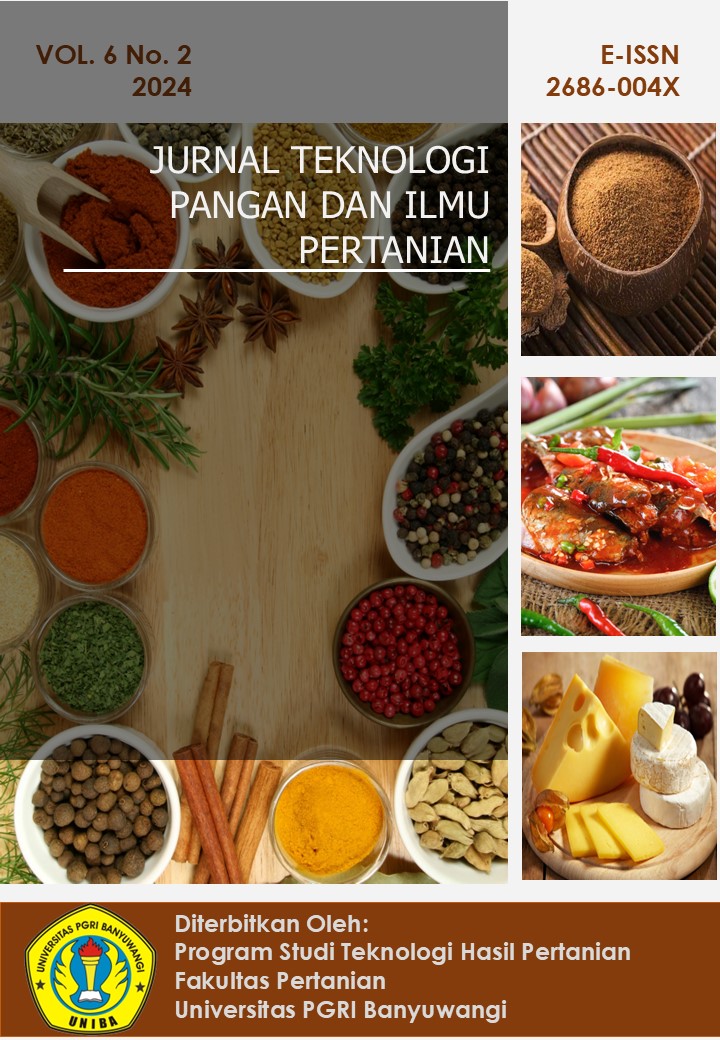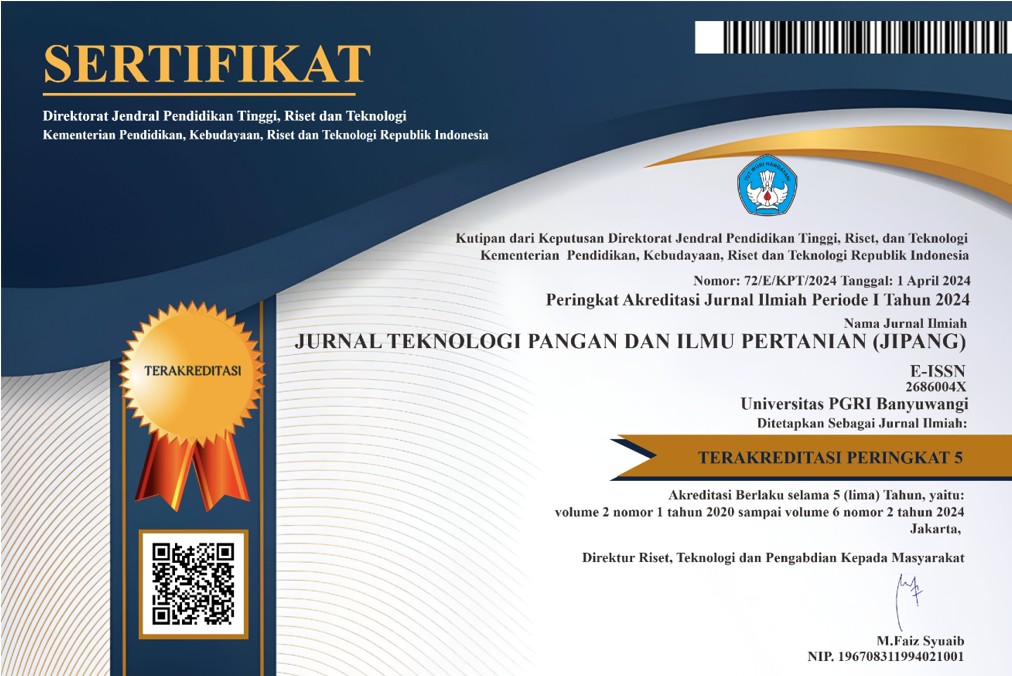PENGARUH PERBEDAAN METODE EKSTRAKSI TERHADAP KADAR POLIFENOL DAUN TEH PUTIH (Camellia sinensis)
DOI:
https://doi.org/10.36526/jipang.v6i02.4964Keywords:
extraction method, white tea leaves, polyphenols, MAE, UAE.Abstract
Extraction methods play an important role in determining the polyphenol content of white tea (Camellia sinensis) leaves, which have high antioxidant properties. This study aims to compare the efficiency of several extraction methods, including Multistage Maceration, Microwave-Assisted Extraction (MAE), and Ultrasonic-Assisted Extraction (UAE), in producing optimal polyphenol levels. Extraction was performed using 96% ethanol solvent with specific parameters for each method. Determination of polyphenol content was done by Folin-Ciocalteu method using UV-Vis spectrophotometer at 765 nm wavelength. The results showed that the MAE method produced the highest polyphenol content, at 63.60%, compared to UAE (48.35%) and Graded Maceration (lower). The advantages of MAE include efficient extraction time, less solvent usage, and higher extract yield. This study highlights the importance of choosing the right extraction method to enhance the health benefits of white tea through its polyphenol content.
References
Chemat, F., et al. (2017). Ultrasound- assisted extraction: Green and innovative technique. Food Chemistry, 125(4), 997–1003.
Dzah, C. S., et al. (2020). Review on the applications of ultrasound-assisted extraction in food and pharmaceutical industries. Journal of Food Science and Technology, 57(3), 1127–1140.
Nugraheni, S., et al. (2022). Optimasi Ekstraksi Polifenol pada Teh Putih dengan Berbagai Metode Ekstraksi. Agritech, 42(3), 189–196.
Saifullah, M., et al. (2021). Optimization of Microwave-Assisted Extraction of
Polyphenols. Journal of Food Science and Technology, 58(3), 1256–1265.
Siddiq, M., et al. (2022). Comparative Analysis of Polyphenol Content in Packaged Tea Using Different Extraction Techniques. Journal of Agricultural Sciences, 34(4), 299–
310.
Singleton, V. L., et al. (1999). Analysis of Total Phenols Using Folin-Ciocalteu Reagent. Methods in Enzymology, 299, 152–178.
Utami, N. F., et al. (2020). Efficiency of Microwave and Ultrasound-Assisted Extraction Methods for Polyphenol Recovery. Food Chemistry, 289, 125643.
Widyasanti, A., et al. (2018). Comparison of UAE and MAE for Extracting Polyphenols from White Tea. Journal of Food Processing and Preservation, 42(3), e13547.
Widyasanti A, Rohdiana D, Ekatama N. 2016. Aktivitas Antioksidan Ekstrak Teh Putih (Camellia sinensis) dengan Metode DPPH (2,2 Difenil-1- Pikrilhidrazil). J Fortech. 1(1)
Widyasanti A, Halimah T, Rohdiana D. 2018. Ekstraksi Teh Putih Berbantu Ultrasonik pada Berbagai Amplitudo. J Apl Teknol Pangan. 7(3):111-116.
Downloads
Published
How to Cite
Issue
Section
License
Copyright (c) 2024 Anita Khairunnisa Anita

This work is licensed under a Creative Commons Attribution-ShareAlike 4.0 International License.











